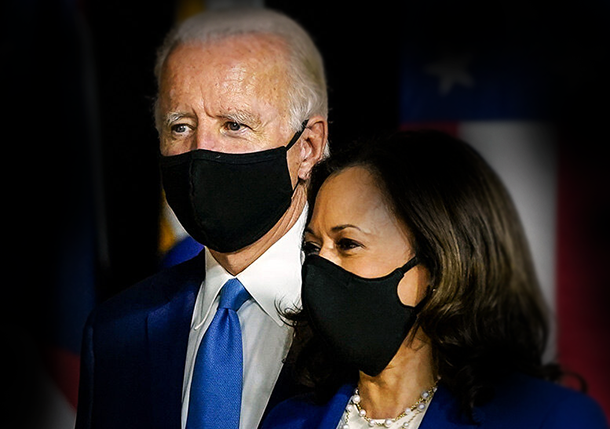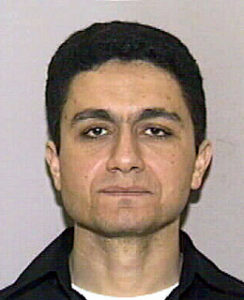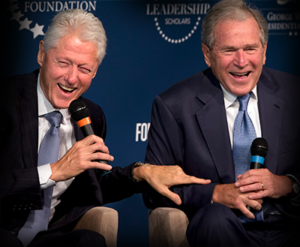
Dr Can Erimtan
21st Century Wire
Following four years of Trumpian antics, President Joe Biden clearly wants to revert to the traditional U.S. imperial policy on the international stage. While, domestically, the Build Back Better programme, seems aimed at placating critics and presenting the current U.S. President as a latter-day FDR, adorned in woke slogans and equipped with a racially equitable and presentable team.
9/11 and The New Pearl Harbor
Twenty years ago, New York’s iconic Twin Towers were felled in a terror attack that has gone down in history as 9/11. The official investigation and explanation of the attacks – The 9/11 Commission Report (22 July 2004) – has never really managed to convince critics and others weary of an over-bearing U.S. foreign policy.
As a result, many conspiracy theories attempting to explain what really happened on 11 September 2001 have been offered up, as I have detailed now more than ten years ago: The starting point of any conspiracy theory regarding 9/11, worth its salt, has to be the Project for the New American Century (PNAC) and its prescriptions made in September 2000. In particular, I am referring to the now infamous document Rebuilding America’s Defenses: Strategy, Forces and Resources for a New Century, published September 2000. The PNAC, as a Neo-Con think tank, was trying to figure out how America could again become the primary power in the world, but deemed such a development unlikely “absent some catastrophic and catalyzing event – like a new Pearl Harbor” . . . a phrase that has by now become emblematic of George W. Bush’s War on Terror and the doctrine of pre-emption in the minds of critics of the U.S. and its foreign policy under Bush (and Obama). There are those who say that it was no coincidence that the Twin Towers and the Pentagon were hit, suspecting that the PNAC and the Bush administration had prior knowledge of the plot, or were even involved in the planning and execution of the attacks. The U.S. authorities have since then employed the events of 11 September to justify the imposition of the Patriot Act to curtail the public’s freedom domestically and to wage a global war on terror, personified in the figure of the now-defunct Osama bin Laden (variously spelled and abbreviated as OBL) and a shadowy organisation known as Al Qaeda (the base in Arabic).
These audacious terror attacks using airplanes as deadly missiles – in New York, Washington D.C. and in a field near Shanksville, Pennsylvania – have largely determined the course of the early 21st century. Following the end of the Cold War and the discovery of the ‘Muslim Extremist’ as NATO’s new chosen enemy to replace the now defunct godless Communist, George W. Bush’s global War on Terror turned the political scientist Dr Samuel Huntington (1927-2008)’s suggestion of a “clash of civilizations” into a deadly reality. The mountainous country of Afghanistan became the first battleground in this unholy “clash.” On 12 September 2001, President Bush spoke these programmatic words that managed to change reality and give history a definite Huntingtonesque turn:
The attack took place on American soil, but it was an attack on the heart and soul of the civilized world. And the world has come together to fight a new and different war, the first, and we hope the only one, of the 21st century. A war against all those who seek to export terror, and a war against those governments that support or shelter them.
Invading Afghanistan to Capture Baghdad: Pipelineistan or a Sea of Oil?
On 13 November 2001, the BBC world affairs editor and veteran journalist Jon Simpson somewhat boastfully made the following claim: “[i]t was only BBC people who liberated this city. We got in ahead of Northern Alliance troops,” freeing the Afghan capital Kabul from the iconoclastic clutches of the Taliban. Admittedly, Simpson subsequently realised the folly of his words and somewhat retracted his bold statement. For, the U.S. Army acting on orders of President George W. Bush had done the conquering and liberating in response to the 9/11 attacks – G.I. Joe versus ‘al-Qaida and Taliban fighters in Afghanistan.’ The U.S. military campaign in the Hindu Kush codenamed Operation Enduring Freedom began on 7 October 2001. A dedicated U.S. State Department website boastfully yet somewhat deceitfully claims that “[i]n just weeks the [U.S.] military essentially destroyed al-Qaeda’s grip on Afghanistan by driving the Taliban from power.”
Though in hindsight the U.S. attack on Afghanistan might appear counter-intuitive, as the original terror attacks had been carried out by 19 Arabs and not 19 Afghans – including fifteen Saudi citizens, with an additional two hailing from the United Arab Emirates, and 1 from Lebanon, and another one from Egypt (“Mohamed Atta”). The latter’s presence and complicity was notably important, for “less than a week” following the collapse of the Twin Towers, “Atta’s passport” was discovered in the rubble of Ground Zero (the name given to the site where the Twin Towers once stood), in an incredible turn of serendipity. In early 2002, the journalist Anne Karpf mused that “[w]e had all seen the blizzard of paper rain down from the towers [on our television screens], but the idea that Atta’s passport had escaped from that inferno unsinged would have tested the credulity of the staunchest supporter of the FBI’s crackdown on terrorism,” yet that was the tall tale to be unquestioningly accepted subsequently. And as a result, Osama bin Laden, whom Bill Clinton had elevated to the status of Public Enemy No. 1 in 1998, was quickly singled out as the mastermind behind the attacks – the mastermind hiding in the Hindu Kush enjoying the hospitality and protection of the beard-wielding Taliban. Previously, Bin Laden had been a staunch U.S. ally and operative, aiding in the Brzesinki-induced fight (or ‘Jihad’) pitting the Mujahideen against the Soviets in Afghanistan during the 1980s – the name Al Qaeda referring to an organisational hub headed by Bin Laden seems to have been first used on 11 August 1988, according to the author Dr Philippe Migaux (cfr. the 2007 book The History of Terrorism: From Antiquity to Al Qaeda). The Bush administration singled out Bin Laden and his shadowy organization as the major culprits and the 19 Arab suicide attackers as his henchmen and Al Qaeda operatives.
Hence, the Bush-declared War-on-Terror’s first object became the mountainous land known as Afghanistan: a nation as artificial as any other nation state on earth, harbouring a plethora of peoples and languages – “Afghanistan is a multi-ethnic and multi-lingual country . . . In Article 4 of Afghanistan’s [2004 C]onstitution, 14 ethnic groups are mentioned: Pashtun, Tajik, Hazara, Uzbek, Turkman, Baluch, Pachaie, Nuristani, Aymaq, Arab, Qirghiz, Qizilbash, Gujur, Brahwui and Other Tribes,” as expressed by the independent researcher and consultant, Meetra Qutb. A result of the fact that the country’s borders were actually “drawn by Britain and czarist Russia during the onset of [the] ‘Great Game’ in Central Asia in the closing decades of the 19th century . . . [borders that] were gerrymandered to split members of ethnic groups between or among different neighboring states,” in the words of anthropologist Dr Nazif Shahrani. Furthermore, the Afghan Constitution’s Article 4 also stipulates that the “word Afghan shall apply to each and every citizen of Afghanistan,” residing within those borders. In this context, it has to be understood that the religion of Islam is meant to provide the ideological glue holding the diverse ethnic (and/or linguistic) groups together.
The Bush administration picked the many-splendoured yet deeply Muslim country in the Hindu Kush as its first target, as the link to 9/11 appeared obvious. The decision to invade Afghanistan, though, seems to have been the earlier “brainchild of a number of experts during a ‘4-day [mid-July 2001] Berlin meeting carrying the heading ‘Brainstorming on Afghanistan’ and [that] was apparently the outcome of the Clinton administration’s concerns over Osama bin Laden,’ going back to the 1998 attacks on two US embassies in Africa – in Dar es Salaam and Nairobi.” And any number of economic and monetary concerns cannot be excluded either. I floated the TAPI pipeline angle in my tenth 9/11 anniversary piece, published in a now no longer extant newspaper. While, the always astute and eloquent Pepe Escobar also spoke about the “high-stakes, hardcore geopolitical game that follows what flows along the pipelines of the planet,” in connection with the Bush invasion of Afghanistan. But Junior or Dubya wasn’t really all that concerned with “pursuing the New Great Game on the ‘oddly shaped Eurasian chessboard’,” as coined by Brzezinki in his 1997 book. In reality the Bush-Cheney gruesome twosome was “quick to abandon the mission [in the Hindu Kush] in order to go into Iraq – that profitable country which ‘floats on a sea of oil,’ as poetically promised by then-Deputy Secretary of Defense Paul Wolfowitz (2001-5).”
Not quite three months after the “New Pearl Harbor,” Peter Beaumont, Ed Vulliamy and Paul Beaver wrote in The Observer that “America intends to depose Saddam Hussein by giving armed support to Iraqi opposition forces across the country.” Under the headline ‘Secret US plan for Iraq war,’ Beaumont, Vulliamy and Beaver added that “President George W. Bush has ordered the CIA and his senior military commanders to draw up detailed plans for a military operation that could begin within months” (2 December 2001). Realising this plan took some more time eventually, requiring a number of semantic contortions that started with the absurd claim that Saddam Hussein was involved in 9/11 and ended in the equally absurd assertion that the Iraqi dictator possessed “Weapons of Mass Destruction” aimed at obliterating Israel and the West. The latter equally far-fetched argument was volubly made by the recently deceased Colin Powell “whose speech at the United Nations [on 5 February] 2003 helped pave the way for the United States to go to war in Iraq.”
Pivot to Asia Redux: Biden as Obama’s Indirect Successor
While the invasion of Iraq was quick and sweet (20 March-3 May 2003), its success only led into a veritable quagmire of sectarian and anti-American violence – an orgy of Islamist agitation that directly led to the foundation of the Islamic State (or IS or ISIS/ISIL) and the subsequent global spread of Jihadi terror aimed at the West and its inhabitants, but still largely menacing the Middle East and parts of Africa and Asia. All the while, the violence in the Hindu Kush continued unabated . . . until now, that is. President Obama’s direct successor started negotiations with the Taliban, excluding the Afghan government from the process. President Trump (whom Biden somewhat facetiously has called “the other guy,” indicating that the 2016 election had been an unforeseen aberration in the scheme of American imperial politics) made a deal with his beard-wielding enemies in the mountains and his successor faithfully stuck to the agreement, albeit somewhat altering its timeline. And, I would argue, President Biden hastened the U.S. withdrawal from the Hindu Kush (or, if you will, the wider Middle East) in order to be able to return Washington’s ship to its Pacific course that had first been set by Obama and his famous “pivot to Asia,” centred on China and the Pacific Rim. President Biden had originally envisaged the 20th anniversary of the 9/11 attacks to mark the U.S. withdrawal from Afghanistan, but circumstances on the ground thwarted that neat plan of chronological propriety. The end of August next appeared as a date to remember. But the Taliban simply overran the country, forcing the Americans to abandon their mission on 15 August. President Biden’s best-laid plan to exit swiftly from the Afghan quagmire in order to revert to his erstwhile boss’ plan seem to have backfired, as a top “US general calls Afghanistan troop withdrawal a ‘logistical success, but a strategic failure’.” Those words coming from the chairman of the Joint Chiefs of Staff, Gen. Mark Milley’s mouth aptly described the hasty U.S. retreat from Kabul while evacuating “over 100,000 people,” who had been involved with the U.S. effort to re-build Afghanistan and thus in clear and imminent danger of Taliban reprisals.

Biden and Harris: The heir apparent, or just passing through?
President Biden seemed unperturbed by this domestic rumble over the disastrous events in the Hindu Kush as he proceeded to step towards his goal of becoming ‘America’s second Pacific president,’ in line with his indirect predecessor’s announcement that he was “America’s first Pacific president” (that is what Obama called himself at Tokyo’s Suntory Hall on 14 November 2009). On 15 September, a joint virtual press conference between Biden, the UK PM Johnson and Australia’s premier Scott Morrison made public the conclusion of a new security pact (receiving the somewhat unwieldy moniker AUKUS). In due course, the BBC summarily reported that the “UK, US and Australia have announced a historic security pact in the Asia-Pacific, in what’s seen as an effort to counter China.” And moreover, this new pact also included the sale of U.S. technology enabling Australia to build nuclear-powered submarines for the first time – a business deal that constituted a direct snub to NATO ally France, “which ha[d] now lost a deal with Australia to build 12 submarines.” This addition of state of the art U.S. military hardware constitutes yet another reference to Obama. Following the conclusion of annual Asia-Pacific Economic Cooperation (APEC) Summit in Honolulu in 2011, “America’s first Pacific president” flew to Australia to address gathered U.S. and Australian troops about their shared purpose of the preservation of peace and security – supposed to be preserved by stationing 2,500 U.S. marines in Australia’s Northern Territory in a so-called Marine Rotational Force program (17 November 2011). And last July, even before the actual U.S. withdrawal from Afghanistan, Biden had already solidified Obama’s words with concrete plans for “four new military sites [that] will be located at Robertson Barracks, Kangaroo Flats, Mount Bundey and Bradshaw Field,” in Australia’s outback in the Northern Territory, costing about $747m. And this would be in addition to the “top secret Joint Defence Facility at Pine Gap near Alice Springs.,” as cheekily divulged by Dr Philip Dorling. In fact, Dorling continues that Pine Gap is nothing but “the crux of an electronic espionage alliance [between the U.S. and Australia] that’s nearly five decades old.”
The U.S. has been spying on its Asian (and other) contemporaries by means of “one of the largest satellite ground stations in the world,” that consists of “no fewer than 33 satellite antennas.” This hidden American spy facility (“the most secret place in Australia”) has grown substantially with the advent of President Obama a decade ago, and will now arguably start working overtime with Biden in the Oval Office. But under Biden’s watch, the U.S. seems set to take a significant step further, with the CIA Director William J. Burns, some weeks ago, announcing “the formation of a China Mission Center (CMC) to address the global challenge posed by the People’s Republic of China that cuts across all of the Agency’s mission areas.”
The question that now appears on the horizon is whether Joe Biden will be able to see through his China agenda given his “decline in job approval among groups central to his base — most notably Black voters, Hispanics and women.” Will he become a one-term president as his ambition to become a new FDR seems to falter in view of the Democrats’ inability to push through the bills that would overhaul “U.S. infrastructure, expand Medicare, fund universal pre-K and put money into clean energy”? Will “the other guy” make a comeback in 2024 and subsequently throw his Build Back Better programme into disarray? Or will this return, as Democrats will contend, mark the beginning of the end of American democracy and the advent of fascism in the as yet largest economy in the world?
The next US election cycle may hold the answers many looming questions, not just for America, but also for the world.
***
21WIRE special contributor Dr. Can Erimtan is an independent historian and geo-political analyst who used to live in Istanbul. At present, he is in self-imposed exile from Turkey. He has a wide interest in the politics, history and culture of the Balkans, the greater Middle East, and the world beyond. He attended the VUB in Brussels and did his graduate work at the universities of Essex and Oxford. In Oxford, Erimtan was a member of Lady Margaret Hall and he obtained his doctorate in Modern History in 2002. His publications include the revisionist monograph “Ottomans Looking West?” as well as numerous scholarly articles. In Istanbul, Erimtan started publishing in the English language Turkish press, culminating in him becoming the Turkey Editor of the İstanbul Gazette. Subsequently, he commenced writing for RT Op-Edge, NEO, and finally, the 21st Century Wire. You can find him on Twitter at @TheErimtanAngle. Read Can’s archive here.
READ MORE 9/11 NEWS AT: 21st Century Wire 9/11 Files
SUPPORT OUR MEDIA PLATFORM – BECOME A MEMBER @21WIRE.TV

















